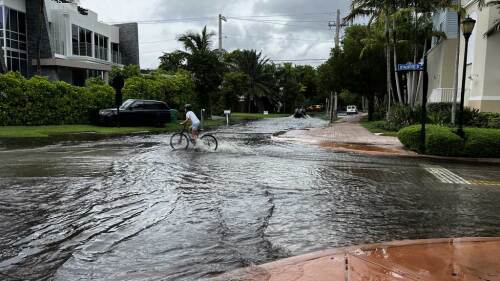“Creative placemaking” can mean different things to different stakeholders, but ULI’s recent Housing Opportunity 2016 conference offered participants some very different strategies as to how to incorporate the concept into their own projects.
Kimberly Driggins, a Loeb Fellow at the Harvard University Graduate School of Design and former associate director for the office of planning for the District of Columbia, offered this definition of creative placemaking: “The intentional use of arts and culture to shape the physical, social, and economic future of communities, which strengthens economic development, promotes civic engagement, and contributes to quality of life,” Driggins said. “In short, art is a verb, and creative placemaking is doing art to change a place.”
One of the planning office’s placemaking endeavors involved staging over a dozen pop-up/temporary projects that injected art and cultural activities into underused retail venues located in economically distressed neighborhoods. The first of four “temporium” initiatives (which were funded in part through a $250,000 ArtPlace America grant) was called Lumen8Anacostia, a three-month celebration designed to promote D.C.’s Anacostia neighborhood as an arts destination. In addition to providing area restaurants with their single-highest-grossing nights, it attracted a popular D.C. chain, Busboys & Poets (a combination restaurant, bookstore, and event venue) to the neighborhood, as well as new performance venues.
Amanda Lovelee, a visual artist based in Minneapolis, currently working as the city artist for Public Art Saint Paul, shared her version of creative placemaking, which involved bringing an important part of municipal government to the people—public meetings. As a member of the Minneapolis city government and a frequent attendee at public meetings, she realized that not many residents actually go to meetings—not due to apathy, but because of real-life issues such as work schedules, child care, and transportation.
Lovelee converted an electric city vehicle into a “popsicle truck” that conducted pop-up community meetings that surveyed residents at busy parks, cultural events, and assisted-living facilities. She and various city project managers hosted 17 pop-up meetings last summer and collected 1,153 surveys (and also handed out 1,828 popsicles). The creative solution proved to have a significant impact in terms of getting residents involved in municipal government, since 70 percent of those who participated said they had never before been to a town meeting. “Just because people weren’t showing up to public meetings didn’t mean they didn’t care,” Lovelee said. “When we did go out into the city and drummed up people, their responses showed that they really cared about what was happening in their community.”
MASS Design does, too. “We want to ask the question, ‘How can architects participate more in an ethical practice model?’ ” asked Michael Murphy, executive director and cofounder of Boston-based architecture firm MASS Design Group, a nonprofit (503c) architectural group that is part design firm, part social enterprise that works globally, designing for populations in the greatest need. “Because we have this thing that’s underleveraged, this fiduciary responsibility for the public good. And if we can leverage that responsibility in a new way, we can have a transformative impact on place and be integrated more closely with government agencies to invest in our own communities.”
MASS Design responded to the 2010 earthquake in Haiti by working with Haitian health care provider Les Centres GHESKIO to build a state-of-the-art permanent cholera treatment center with an on-site wastewater treatment facility that prevents recontamination of the water table and the spread of the disease. They also incorporated a “lo-fab” (locally fabricated) development model on the project, which used local labor and materials to build the facility.
“We all have different professions and seats at the table, but infusing creativity early on in the process is part of what flips the switch,” said Katherine “Katie” Swenson, vice president of national design initiatives for Enterprise Community Partners following the discussion. “Infusing each step of the process with a little bit more creativity and imagination may seem like it takes longer, but it actually gets better results.”


![20250517 PW - SAC Health - 02 web[1].jpg](https://cdn-ul.uli.org/dims4/default/43570aa/2147483647/strip/true/crop/2500x1405+0+130/resize/500x281!/quality/90/?url=https%3A%2F%2Fk2-prod-uli.s3.us-east-1.amazonaws.com%2Fbrightspot%2F07%2F06%2F6a84cb3148b78f5e1c660a2877a9%2F20250517-pw-sac-health-02-web1.jpg)


